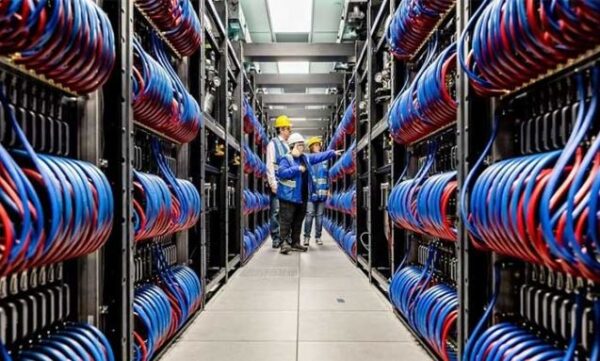The US Aurora supercomputer has been successfully assembled and will go into operation by the end of this year.
The installation of Aurora’s 10,624th and final compute blade marks an important milestone for exascale-class supercomputers (exascale is the ability of a computer system to process at least one exaflops, or a billion billion calculations per second) at the US Department of Energy (DOE) Argonne National Laboratory. After years of planning and research, the system now includes all the hardware that could turn it into one of the world’s most powerful supercomputers when used for scientific operations. Crafted by Intel and Hewlett Packard Enterprise (HPE), Aurora is capable of delivering more than two exaflops of computing power (more than 2 trillion operations per second).
America’s Aurora supercomputer can perform 2 billion billion calculations per second.
The Aurora manufacturing team built the system piece by piece in 1.5 years, installing the wafers and other components shipped to DOE’s Argonne Leadership Computing Facility (ALCF) from November 2021, according to Susan Coghlan. , project manager Aurora at ALCF. “While there is still much work to be done before rolling out the system to the scientific community around the world, we are extremely excited to have the final hardware installed,” Coghlan said.
As the “backbone” of the system, Aurora’s compute slabs are rectangular blocks containing the processor, memory, networking, and cooling technology. The machine’s computing power comes from Intel’s central processing unit (CPU) and graphics processing unit (GPU). Each compute blade features two Intel Xeon CPU Max Series processors and six Intel Data Center GPU Max Series processors.
Since each compute plate weighs nearly 32kg, the team needed a specialized machine to install them precisely vertically on a large rack the size of Aurora’s refrigerator. This supercomputer has a total of 166 racks, each containing 64 compute blades. Racks line up in eight rows, taking up the size of two professional basketball courts in the ALCF data center.
Before installing the system, Argonne had to make a number of major facility upgrades, including adding new acreage to provide enough room for the supercomputer, building a mechanical and equipment room to increase electrical capacity, and building cool. Now that the machine is complete, the team from ALCF’s Aurora Early Science program and DOE’s Exascale Computing Project will begin scaling the application on the full system.











